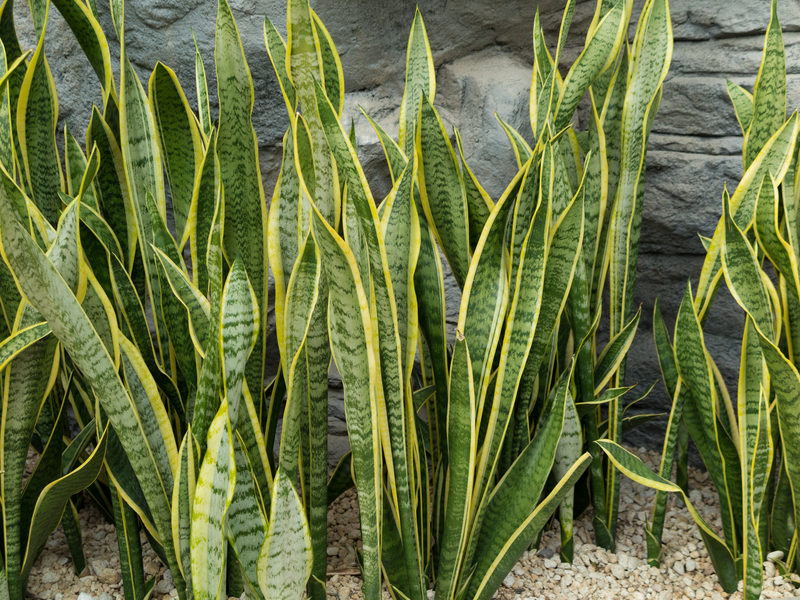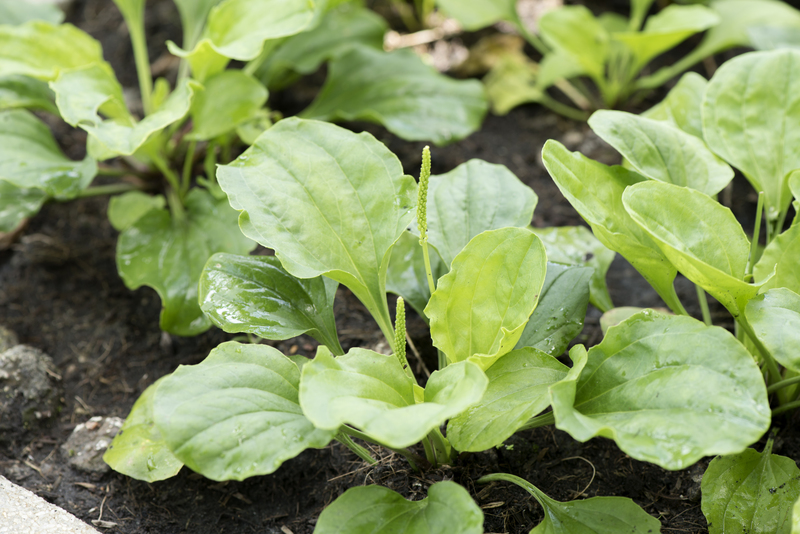Bring Nature Inside with Vertical Gardening
Posted on 05/06/2025
Bring Nature Inside with Vertical Gardening
Are you longing for the serenity of nature within your home? Vertical gardening offers a transformative solution, bringing life, color, and clean air to indoor spaces. Whether you have limited square footage or a deep love for plants, vertical garden designs allow you to create lush green walls, maximize your decor, and support a healthy environment. In today's urban landscapes, embracing indoor plant walls is the perfect way to reconnect with nature while adding both style and substance to your home or office.
Why Vertical Gardening Is the Ultimate Choice for Indoor Nature
Vertical gardening isn't just a design fad; it's an eco-friendly lifestyle shift that provides numerous benefits. Here are compelling reasons to bring nature inside with vertical gardening:
- Space-saving: Make the most of small areas, transforming unused walls into vibrant displays.
- Clean air: Indoor plant walls naturally purify the air, absorbing toxins and improving overall air quality.
- Enhanced well-being: Plants have been shown to reduce stress, boost mood, and enhance productivity.
- Aesthetic transformation: Living walls are visually stunning and provide a modern touch to any space.
- Noise reduction: Dense foliage absorbs and dampens sound, creating a peaceful indoor environment.

What Is Vertical Gardening?
Vertical gardening involves growing plants upward, rather than outward, using structured supports like walls, trellises, and modular panels. Living walls--also known as green walls or plant walls--bring lush greenery into homes and offices without the need for sprawling garden beds.
Vertical gardening systems range in complexity from DIY solutions--such as repurposed pallets or wall-mounted pots--to sophisticated hydroponic setups that support a variety of plants. This style of indoor garden is an innovative response to urban living, allowing you to bring nature indoors regardless of space constraints.
Popular Types of Indoor Vertical Gardens
1. Wall Planters and Pockets
One of the simplest ways to create a vertical garden indoors is by attaching planters or fabric pockets to a wall. These are ideal for herbs, small flowers, or trailing plants and can be arranged in artistic patterns to suit your decor aesthetic.
2. Modular Green Walls
Modular systems use prefabricated panels that can hold a variety of plants. These systems feature built-in irrigation and are suitable for growing an expansive array of plant species, from moss to ferns to tropical plants. Green wall installations are perfect for adding a dramatic statement piece to living rooms, lobbies, or conference rooms.
3. Freestanding Vertical Plant Towers
If you're renting or uncertain about installing permanent structures, plant towers offer flexibility and portability. These freestanding units can be moved around to capture optimal sunlight and suit seasonal changes.
4. Repurposed Shelving and Hanging Gardens
Repurposing shelves, ladders, or hanging baskets invites endless creativity. This DIY approach allows for frequent changes to plant varieties or arrangements, making it possible to adapt your indoor vertical garden with ease.
Best Plants for Indoor Vertical Gardening
Choosing the right plants is crucial for a thriving indoor plant wall. Select species that are compatible with your home's lighting, temperature, and humidity. Here's a list of popular and low-maintenance choices for indoor vertical gardens:
- Pothos (Epipremnum aureum): Hardy, trailing, and excellent at purifying air.
- Philodendron: Adaptable climbers, perfect for vertical displays.
- Boston Fern: Adds lush, soft foliage and excels in humid environments.
- Peace Lily: Known for its beautiful white blooms and air-cleaning abilities.
- Sword Fern: Provides dense greenery and texture.
- Spider Plant: Striking, arching leaves with air-purifying benefits.
- Snake Plant: Tolerant of low light and irregular watering, ideal for beginners.
- English Ivy: A classic climber suitable for many indoor conditions.
- Herbs: Basil, parsley, mint, and oregano thrive in vertical gardens and are convenient for culinary use.
Tip: For an eye-catching display, combine a mixture of trailing, upright, and flowering plants in your vertical system.
How to Start Your Indoor Vertical Garden
1. Assess Your Space
Start by selecting a wall or area with adequate light--south-facing walls are ideal, but supplemental grow lights can help if natural light is limited. Consider humidity, temperature stability, and proximity to water sources.
2. Choose the Right System
Depending on your space, budget, and commitment to maintenance, choose from wall pockets, modular panels, hanging pots, or plant tower systems. Consider whether you prefer a DIY approach or a professional installation.
3. Prepare Your Wall or Support Structure
Before installation, ensure your wall can hold the combined weight of soil, plants, and water. Protect the wall surface with water-resistant materials if necessary.
4. Select High-Quality Soil and Plants
Use lightweight, well-draining potting mix for containers. Avoid heavy garden soils that may retain too much moisture. When arranging plants, group together those with similar lighting and moisture needs.
5. Install an Irrigation System
Automated drip or wick irrigation systems significantly reduce watering chores. For smaller gardens, hand watering is sufficient--just take care not to overwater.
6. Plant and Maintain
Once your structure is in place, add your chosen plants, leaving enough space for growth. Regularly prune, fertilize, and check for pests. Rotate and refresh plants as desired for seasonal variety and continued vibrancy.
Design Tips to Bring Nature Inside with a Vertical Garden
- Create contrast: Mix leaf shapes, colors, and plant sizes for a striking display.
- Symmetry and patterns: Arrange plants in geometric grids or flowing organic shapes for visual appeal.
- Accessorize: Add LED lights, decorative pots, or artful panels to personalize your green wall.
- Seasonal rotation: Refresh your plant selection throughout the year for continued interest.
- Use mirrors: Place mirrors near your green wall to reflect foliage and make the space feel larger.
Don't be afraid to experiment with textures, colors, and plant arrangements to make your vertical gardening project truly unique!
Maintaining Your Indoor Vertical Garden
Keeping your indoor vertical garden healthy requires ongoing care, but the results are rewarding. Follow these maintenance tips:
- Water appropriately: Ensure the soil remains moist but not soggy. Monitor for signs of overwatering or underwatering.
- Fertilize regularly: Use liquid indoor plant fertilizer during growth periods, following product recommendations.
- Prune and clean: Remove yellowed leaves, trim overgrown stems, and wipe dust from leaves to promote health and beauty.
- Monitor for pests: Check for common indoor pests such as aphids, spider mites, and scale. Address infestations promptly with eco-friendly solutions.
- Rotate plants: Change out plants occasionally to balance light exposure and refresh your garden's appearance.
If you notice plants languishing, reassess lighting, humidity, and watering schedules. With attention and adaptation, your living wall will thrive year-round.
Health and Wellness Benefits of Vertical Indoor Gardens
Embracing vertical gardening for interiors offers profound psychological and physical benefits:
- Improved mood and focus: Exposure to greenery helps reduce stress, fight fatigue, and boost productivity.
- Enhanced air quality: Certain plants absorb formaldehyde, benzene, and other toxins, creating a healthier living environment.
- Increased humidity: Plants naturally release moisture, which can help combat dry indoor air, benefiting respiratory health.
- Connection to nature: Caring for indoor plants fosters mindfulness and a sense of accomplishment.
- Allergy relief: Research suggests some plant varieties may capture airborne dust, helping reduce allergies.
Inspiring Ways to Bring Nature Inside with Vertical Gardening
Home Office
Add a lush vertical garden behind your desk to boost focus, energy, and calm throughout the workday. Choose low-maintenance, air-purifying plants like snake plant and philodendron.
Living Room
Make your living space a sanctuary with a feature green wall, hanging garden, or tiered shelf display. Incorporate dramatic foliage for a showstopping effect.
Kitchen
Grow your own culinary herbs on a vertical wall, keeping fresh flavors within arm's reach.
Bathroom
The high humidity in bathrooms is perfect for ferns, mosses, and tropical species. Add vertical planters in the shower or above the tub for a spa-like retreat.
Entryway
Welcome guests with a living wall that instantly sets a calm, refreshing tone as soon as they step inside your home.
Sustainability and Eco-Friendly Living with Vertical Gardens
Vertical gardening indoors is more than beautiful--it's a sustainable choice. Plant walls provide natural insulation, regulating indoor temperature and reducing energy consumption. By incorporating edible and medicinal plants, you further minimize your household's ecological footprint.
Many vertical garden systems use recycled materials, and compact cultivation decreases water usage relative to traditional gardens. By cultivating your own herbs and vegetables, you help cut down on food packaging and transportation emissions.

Frequently Asked Questions About Indoor Vertical Gardening
- Can I use vertical gardening in small apartments? Absolutely! Even a single wall panel or hanging pocket planter can bring dramatic greenery into the tiniest spaces.
- How much light do indoor vertical gardens need? Most vertical gardens thrive with bright, indirect light. If sunlight is limited, supplement with full-spectrum LED grow lights.
- Are vertical gardens high maintenance? Maintenance depends on your system and plant choices. Automated irrigation and hardy plants make care easier. Regular pruning and monitoring are crucial.
- Do I need professional installation? Not necessarily! Many indoor vertical gardens are DIY-friendly. However, for large or intricate systems, professional help can ensure stability and the best results.
- Can edible plants be grown indoors vertically? Yes! Many herbs, leafy greens, and some vegetables suit vertical setups. Just be sure they receive appropriate light and nutrients.
Final Thoughts: Enhance Your Space--Bring Nature Inside with Vertical Gardening
Transforming your living or working environment with vertical gardening is a rewarding journey that nurtures both home and soul. Whether you're seeking fresh herbs in your kitchen, improved air in your office, or simply a beautiful indoor oasis, vertical plant walls deliver on all fronts. By following the guidance above, you can bring nature inside, celebrate sustainable living, and reap the health and aesthetic benefits for years to come.
Why wait? Start planning your vertical garden today--and discover just how easy and impactful it is to invite nature into your daily life.

